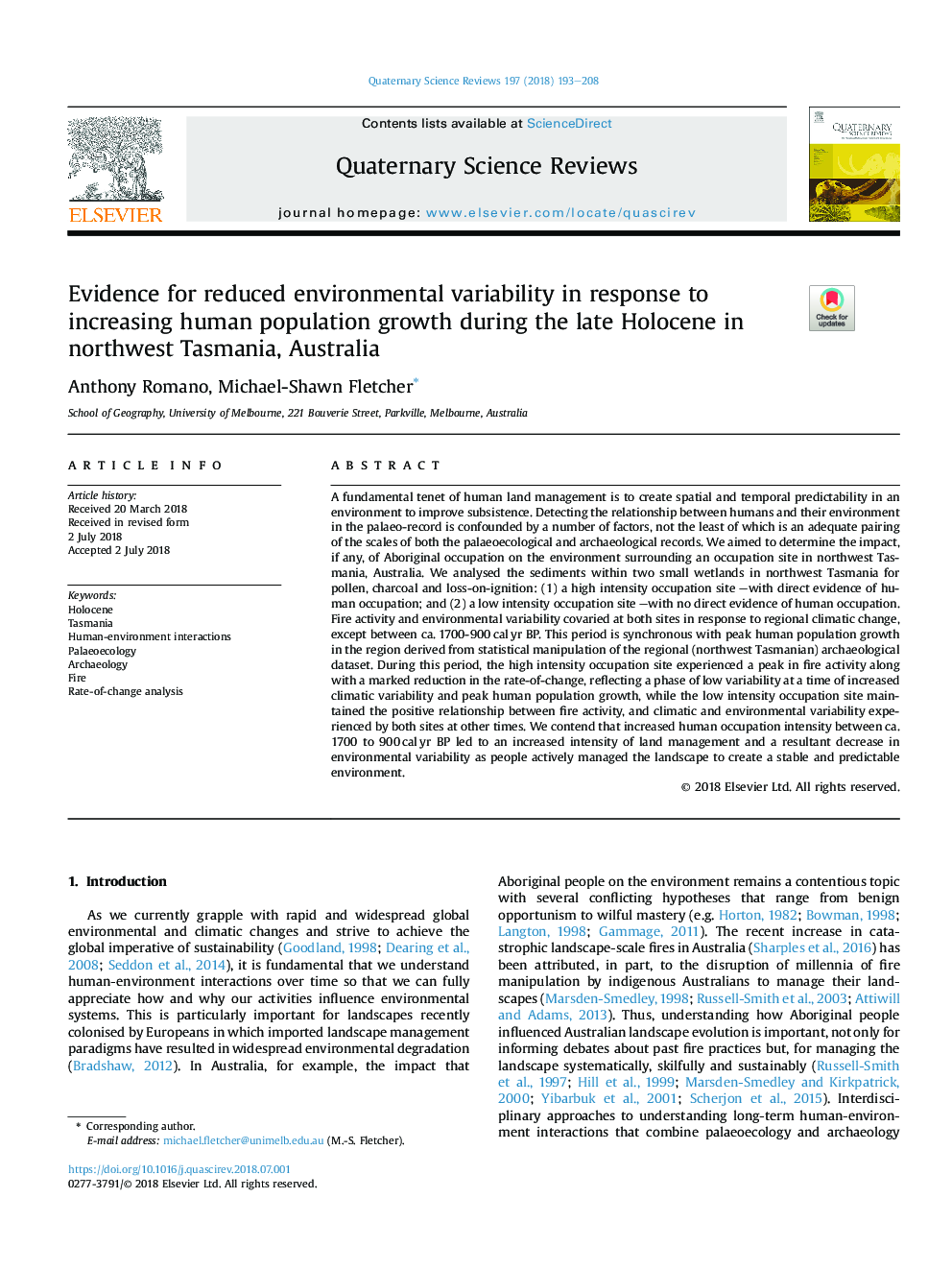| کد مقاله | کد نشریه | سال انتشار | مقاله انگلیسی | نسخه تمام متن |
|---|---|---|---|---|
| 10120986 | 1640738 | 2018 | 16 صفحه PDF | دانلود رایگان |
عنوان انگلیسی مقاله ISI
Evidence for reduced environmental variability in response to increasing human population growth during the late Holocene in northwest Tasmania, Australia
ترجمه فارسی عنوان
شواهد برای کاهش تغییرات محیطی در واکنش به افزایش رشد جمعیت انسانی در اواخر هولوسن در شمال غربی تاسمانی، استرالیا
دانلود مقاله + سفارش ترجمه
دانلود مقاله ISI انگلیسی
رایگان برای ایرانیان
کلمات کلیدی
هولوسن، تاسمانی، تعاملات انسان و محیط، پالایئوکولوژی، باستان شناسی، آتش، تجزیه و تحلیل نرخ تغییر،
موضوعات مرتبط
مهندسی و علوم پایه
علوم زمین و سیارات
زمین شناسی
چکیده انگلیسی
A fundamental tenet of human land management is to create spatial and temporal predictability in an environment to improve subsistence. Detecting the relationship between humans and their environment in the palaeo-record is confounded by a number of factors, not the least of which is an adequate pairing of the scales of both the palaeoecological and archaeological records. We aimed to determine the impact, if any, of Aboriginal occupation on the environment surrounding an occupation site in northwest Tasmania, Australia. We analysed the sediments within two small wetlands in northwest Tasmania for pollen, charcoal and loss-on-ignition: (1) a high intensity occupation site -with direct evidence of human occupation; and (2) a low intensity occupation site -with no direct evidence of human occupation. Fire activity and environmental variability covaried at both sites in response to regional climatic change, except between ca. 1700-900â¯calâ¯yr BP. This period is synchronous with peak human population growth in the region derived from statistical manipulation of the regional (northwest Tasmanian) archaeological dataset. During this period, the high intensity occupation site experienced a peak in fire activity along with a marked reduction in the rate-of-change, reflecting a phase of low variability at a time of increased climatic variability and peak human population growth, while the low intensity occupation site maintained the positive relationship between fire activity, and climatic and environmental variability experienced by both sites at other times. We contend that increased human occupation intensity between ca. 1700 to 900â¯calâ¯yr BP led to an increased intensity of land management and a resultant decrease in environmental variability as people actively managed the landscape to create a stable and predictable environment.
ناشر
Database: Elsevier - ScienceDirect (ساینس دایرکت)
Journal: Quaternary Science Reviews - Volume 197, 1 October 2018, Pages 193-208
Journal: Quaternary Science Reviews - Volume 197, 1 October 2018, Pages 193-208
نویسندگان
Anthony Romano, Michael-Shawn Fletcher,
